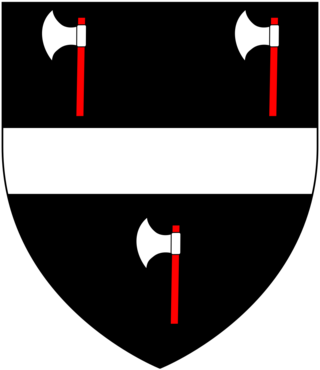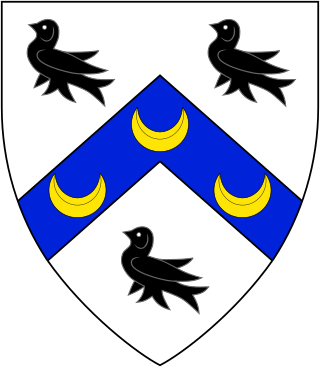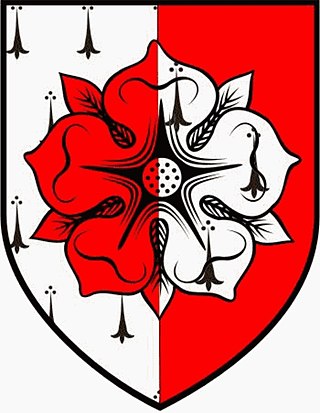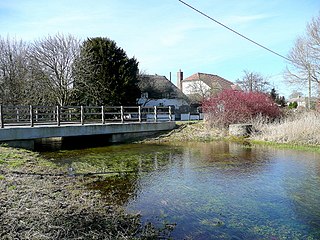
Earl of Cottenham, of Cottenham in the County of Cambridge, is a title in the Peerage of the United Kingdom. It was created in 1850 for the prominent lawyer and Whig politician Charles Pepys, 1st Baron Cottenham. ) He served as Lord Chancellor from 1836 to 1841 and from 1846 to 1850. Pepys had already been created Baron Cottenham, of Cottenham in the County of Cambridge, in 1836, and was made Viscount Crowhurst, of Crowhurst in the County of Surrey, at the same time he was given the earldom. These titles are also in the Peerage of the United Kingdom. The viscountcy is used as a courtesy title for the Earl's eldest son and heir apparent.
There have been four baronetcies created for people with the surname Hoare, one in the Baronetage of Ireland, one in the Baronetage of Great Britain and two in the Baronetage of the United Kingdom. The second holder of the third creation was raised to the peerage as Viscount Templewood in 1944.

There have been three baronetcies created for persons with the surname Burdett, two in the Baronetage of England and one in the Baronetage of Ireland. As of 2008, two of the creations are extant while one is dormant.

There have been two baronetcies created for the Guise family, one in the Baronetage of England and one in the Baronetage of Great Britain. The latter creation is extant as of 2014.

The Wrey Baronetcy, of Trebitch in the County of Cornwall, is a title in the Baronetage of England. It was created on 30 June 1628 for William Wrey (d.1636), 2nd son of John Wrey of Trebeigh, St Ive, Cornwall, a member of an ancient Devon family. The third Baronet was a supporter of the Royalist cause and sat as Member of Parliament for Lostwithiel after the Restoration. He married Lady Anne, third daughter and co-heir of Edward Bourchier, 4th Earl of Bath, and a co-heir to the barony of Fitzwarine. The fourth Baronet represented Liskeard and Devon in the House of Commons. The fifth Baronet was Member of Parliament for Camelford while the sixth Baronet represented Barnstaple.

The Trelawny, later Salusbury-Trelawny Baronetcy, of Trelawny in the County of Cornwall, is a title in the Baronetage of England. It was created on 1 July 1628 for John Trelawny of Trelawny in the parish of Pelynt in Cornwall. The family derived much of their political power from their patronage of the nearby pocket borough of East Looe. The second Baronet sat as Member of Parliament for East Looe, Cornwall and Liskeard. The third Baronet was a clergyman and one of the Seven Bishops imprisoned by James II. The fourth Baronet represented West Looe, Liskeard and East Looe in the House of Commons. The fifth Baronet was Member of Parliament for East Looe. The sixth Baronet sat as Member of Parliament for West Looe and served as Governor of Jamaica. The eighth Baronet was Member of Parliament for East Cornwall 1832–1837 and Lord-Lieutenant of Cornwall. In 1802 he assumed the additional surname of Salusbury. The ninth Baronet represented Tavistock and East Cornwall in Parliament.
There have been six baronetcies created for persons with the surname Newton, three in the Baronetage of England, one in the Baronetage of Nova Scotia and two in the Baronetage of the United Kingdom.

There have been seven baronetcies created for persons with the surname Watson, one in the Baronetage of England, one in the Baronetage of Great Britain and five in the Baronetage of the United Kingdom. One creation is extant as of 2016.
There have been two baronetcies created for members of the Boughton, later Rouse-Boughton family, one in the Baronetage of England and one in the Baronetage of Great Britain.
There have been two baronetcies created for members of the Wolseley family, one in the Baronetage of England and one in the Baronetage of Ireland. As of 2018, the Wolseley Baronetcy of Mount Wolseley is dormant.
There have been two baronetcies created for persons with the surname Mackworth, one in the Baronetage of England and one in the Baronetage of Great Britain. One creation is extant as of 2008.

The Poore Baronetcy, of Rushall in the County of Wiltshire, is a dormant title in the Baronetage of Great Britain. It was created on 8 July 1795 for John Methuen Poore, with remainder, failing heirs male of his own, to his brother Edward Poore and the heirs male of his body.
There have been two baronetcies created for persons with the surname Darell, one in the Baronetage of England and one in the Baronetage of Great Britain. As of 2014 one creation is extant.

The Nightingale Baronetcy of Newport Pond is a title in the Baronetage of England and a rank in the British aristocracy. It was created by King Charles I of England, on 1 September (1628), and is one of the oldest baronetcies to remain active in England.

The Fagge Baronetcy, of Wiston in the County of Sussex, is a title in the Baronetage of England.

There have been three baronetcies created for persons with the surname Cooke, two in the Baronetage of England and one in the Baronetage of Ireland. One creation is extant as of 2013.

There have been three baronetcies created for persons with the surname Carew, two in the Baronetage of England prior to 1707, one in the Baronetage of Great Britain.

Newton Tony is a rural English village and civil parish in the county of Wiltshire, close to the border with Hampshire. Situated in the Bourne Valley, Newton Tony is about 9 miles (14 km) north-east of its post town, Salisbury. Wilbury House, a Grade I listed 17th-century mansion, stands in parkland in the north of the parish.
There have been five baronetcies created for persons with the surname Tyrrell, all in the Baronetage of England. All five creations are extinct, as is the Tyrell baronetcy. The six creations all claim a descent from Walter Tirell, the reputed accidental killer of King William II.
Wilbury House or Wilbury Park is an 18th-century Neo-Palladian country house in the parish of Newton Tony, Wiltshire in South West England, about 8.7 miles (14 km) northeast of Salisbury. It is a Grade I listed building, and the surrounding park and garden are Grade II listed.













